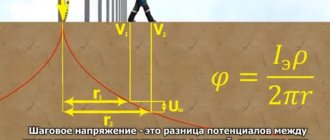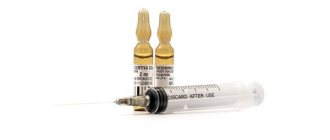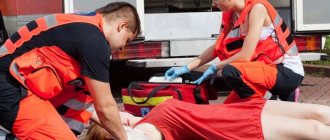July 20, 2021
Burns are one of the most common types of injuries in children and adults. Almost everyone has experienced a burn at some point in their life, particularly a thermal, chemical or solar burn.
Burns are one of the most common types of injuries in children and adults. Almost everyone has experienced a burn at some point in their life, such as a thermal, chemical or solar burn. Often minor burns can be treated with home remedies, but in other cases immediate medical attention is required.
In Russia, about 300 thousand cases of burn injury are registered annually (among those who sought medical help). Physical suffering, long-term disability, possible disability and mortality make this type of traumatic pathology the most relevant. With timely, reasonable, competent provision of first aid, it is possible not only to relieve the patient of pain, but also to prevent the development of complications, to create conditions for subsequent effective treatment and a speedy recovery.
There are several types of burns, including thermal, chemical, and even electrical and radiation. Thermal burns are the most common and account for more than 90% of all types. These are burns from flame, hot steam, hot or burning liquid, boiling water, burns from contact with hot objects, sunburn. The severity of burns is divided depending on the depth of skin damage.
With a 1st degree burn, only the upper layers of the skin are affected. Severe redness and swelling of the skin develop, and pain and a burning sensation are noted in the burned area. Symptoms subside within two days, and after a week complete recovery occurs.
With a 2nd degree burn, the top layer of skin completely dies and peels off, and in its place bubbles filled with a clear liquid form. If the course of the disease is not complicated by wound infection, healing occurs in 10-12 days.
With 3rd degree burns, the skin is affected almost to its entire depth. In this case, massive blisters with a thick shell are formed, filled with bloody contents, tense and very painful.
With a 4th degree burn, the most serious, there is complete death of all layers of the skin, even the deepest ones, including subcutaneous fat, as well as underlying tissues - muscles, tendons, bones. The above burns can affect limited (local) or large areas of the skin.
First aid for burns
Under no circumstances should you remove dead skin or open blisters yourself, apply ice, butter, various ointments and medications to the burned area, or cover the burn with cotton bandages or adhesive tape. If you are burned by chemicals, you must remove part of the clothing on which the substance has come into contact and pour plenty of cool water over the affected area. For extensive burns, it is recommended to take a 10-minute shower or lie in a cool bath. After water procedures, it is important to pat your skin very carefully, put on loose clothing and see a doctor.
For a limited burn, it is necessary to place the burned area of skin under cold water for 10-15 minutes or apply a sterile ice pack; apply a sterile bandage; Give the patient a painkiller and if your health worsens, consult a doctor. For extensive burns, apply a loose sterile bandage; give an anesthetic and drink an alkaline-salt mixture (1 teaspoon of table salt and ½ teaspoon of baking soda, dissolved in 2 glasses of water), after providing first aid, take the victim to the hospital. In case of burns, a large amount of sodium ions leaves the vascular bed along with the plasma (0.5–0.6 mEq/% burn/kg of patient body weight). Therefore, fluid therapy, first of all, aims to fill the vascular bed and restore its sodium content.
Chemicals, with the exception of powdered ones, are washed off with water; Powdery substances must be brushed off after moistening them with water. Burns caused by acids, alkalis or organic substances (for example, phenols, cresols, petrochemical products) should be washed with copious amounts of water, and the burn area should be washed for at least 20 minutes.
Caring for burn-damaged skin
The more attention you pay to caring for your skin after a chemical burn, the faster the surface will heal and the less likely you are to be left with a scar forever.
The rules of care are simple: do not use substances that irritate the skin. These include almost all alcohol-based products, fragrances and alkaline compounds (soaps, shampoos). Use creams that do not contain potent substances or allergens. They will soften the skin, provide enhanced nutrition for quick treatment of chemical burns and protect the epidermis from possible damage.
La-Cri cream was developed by doctors to care for the most sensitive skin, including those damaged by chemical burns. There are no allergens in it (therefore they can be used even in baby skin care), but there are many nourishing plant extracts that are responsible for regeneration.
What should not be done for burns?
Some traditional methods of treating burns can be harmful. For example, it is strictly forbidden to use oils, as they retain heat on the surface of the skin, thereby aggravating the burn. There is also no evidence that raw eggs help with burns; on the contrary, it can cause infection of the burn surface. Many people believe that it is better to use ice rather than cool water to help with a burn. However, ice can do more harm than good and further irritate burned skin. In some extreme cases, a person may experience a cold burn from exposure to ice. There is also an opinion among ordinary people that using toothpaste at the site of the burn can help cope with the problem. In fact, non-sterile toothpaste can cause the spread of bacteria in the affected area.
Burn: concept, degrees and types
It is a type of physical injury. Occurs due to exposure to high temperature, a special chemical, ultraviolet or ionizing radiation, or electric current. The receiving process is accompanied by severe pain and noticeable damage to the skin, mucous membrane or cornea of the eyes.
The severity of the condition depends on the size of the burned surface and the depth of tissue damage. The larger they are, the more severe the injury.
There are four degrees of damage based on depth:
- The first degree is characterized by redness of the injured area, only the upper layer of the epidermis is affected.
- The second degree is characterized by the appearance of blisters filled with yellowish liquid.
- In the third degree, the skin is deeply affected, and the processes of death and scab formation begin.
- In the fourth degree, necrosis of the skin occurs, accompanied by charring; bones and muscles may be involved in the process.
Depending on the type of injury, burns can be:
- Thermal. The reason is exposure to boiling liquid, steam, a hot object or open fire.
- Electrical. Occurs under the influence of electric current. Characteristic are small wounds at the discharge entry/exit points. They are characterized by great depth and electrical trauma to internal organs.
- Chemical. Occur under the influence of alkaline or dangerous acidic compounds, salts of heavy metals. Not only the skin, but also the oropharynx and esophagus can be affected.
- Radiation. Occur during atomic explosions and as a result of radiation leakage, they are rare. This category includes damage to the skin from exposure to the rays of the sun.
Experts' opinion
The conducted clinical study proves the high efficiency, safety and tolerability of products for daily skin care of children with mild and moderate forms of atopic dermatitis and during remission, accompanied by a decrease in the quality of life of patients. As a result of therapy, a decrease in the activity of the inflammatory process, a decrease in dryness, itching and flaking was noted.
Clinical studies have confirmed that bisabolol inhibits the production of anti-inflammatory mediators NO and PGE2 in cells, reduces the expression of iNOS and COX-2 genes by inhibiting the NF-kB and AP-1 signaling pathway. In addition to the anti-inflammatory effect, tests have also proven the bleaching and lightening activity of the substance.
One of the key components of the cream is violet extract. This plant is widely used in medical practice, due to the richness of its chemical composition. Violets are rich in flavonoids; anthocyanin glycosides and phenolcarboxylic acids are found in their flowers. The plant extract is prescribed by specialists for various skin diseases.
Sources:
- Yukhtina N.V., Modern ideas about atopic dermatitis in children
- Kamasheva G.R., Khakimova R.F. Valiullina S.A., Methods for assessing the severity of atopic dermatitis in young children, Dermatology journal, 2010
- Kovyazina N.A., Fedosimova N.A., Illek Ya. Yu. Diagnosis of atopic dermatitis in young children, Vyatka Medical Bulletin, 2007
Symptoms
The very first and “harmless” signs of a chemical burn are redness of the mucous membrane and burning, as well as blepharospasm (the patient cannot open his eyes).
Typical symptoms for chemical burns of any origin are :
- photophobia;
- blurred vision;
- decreased visual acuity;
- swelling of the eye;
- change in color of the cornea and mucous membrane;
- paleness of the cornea of the eye;
- the appearance of scars over time.
Sometimes, as a consequence of a chemical burn, cataracts or glaucoma can develop, and even after taking all therapeutic measures, gradual and inevitable death of the eyeball (subatrophy) can occur.
Important! Eye burns mainly occur during work at various manufacturing plants, where a person comes into contact with various chemicals.
But you can also get such an injury at home (for example, when doing eyelash extensions or getting household detergents or alcohol in your eyes).
Auxiliary products for burns
Rescuer
Suitable as an additional product. This domestically produced ointment is known for its natural composition and universal healing properties. Most likely, you will find a Rescuer in your first aid kit - use it when treating burns for their quick healing.
Actovegin
It is an ointment that effectively copes with sunburn. In some cases, it can be used to prevent burns after radiation therapy sessions.
Chlorhexidine solution
Suitable for disinfecting burn surfaces. You can apply a bandage soaked in Chlorexidine to the affected area or irrigate the burn several times a day with a 0.5% solution.
Classification of injury
To determine what treatment is necessary, you need to briefly describe what degrees of damage are distinguished:
- First degree burn . Redness, slight pain and swelling appear in the superficial layers of the epidermis.
- Thermal wound II degree . Severe redness, swelling, detachment of the damaged layer, formation of blisters filled with yellow liquid. The affected area heals in 11-15 days, skin pigmentation can persist for 2.5-3 weeks.
Wounds of the first two degrees are considered superficial. Their treatment is possible on an outpatient basis. They are able to heal with conservative treatment.
- IIIA degree burns are accompanied by damage to the epidermis and dermis. A light-colored scab forms. Beneath it there are noticeable pink areas - the papillae of the dermis. As the scab moves away or changes, areas covered with epithelium appear in patches. Recovery occurs after 3-6 weeks. The result is a rough scar.
- IIIB degree : skin damage, muscles are often injured. The wound is cleared of dead tissue after 4-6 weeks.
- IV degree is the most prognostically unfavorable and severe. These injuries affect the fascia, muscles, tendons and bones. The scab is thick and charring may occur. Possibly accompanied by purulent complications such as arthritis, abscesses and phlegmon.
Lesions of IIIB and IV degrees are deep wounds that require hospital stay and surgical treatment, as well as the issue of skin restoration using skin grafting. It is necessary to seek specialized help and rational treatment from appropriate specialists without delay.
Lesions of IIIB and IV degrees require hospital stay and surgical treatment.
What to put on children's burns?
The skin of babies is especially sensitive to burns. After two or three years, physical activity increases in children, and it is often difficult for parents to keep an eye on the child, and danger lurks at every step: for example, a hot stove, iron, kettle - at home, fires - on the street. For childhood burns, it is important to determine the affected area.
To determine the affected area, you can use the “rule of palm”: one child’s palm equals approximately 1% of the body surface.
To determine the percentage of damage, it is enough to compare the size of the palm with the size of the affected area. It should be taken into account that burns in children develop faster than in adults: for example, in an infant, a burn upon contact with a surface/liquid whose temperature is 60 °C occurs in approximately 10 seconds.
La-Cri cream was created specifically to relieve skin irritations. Including those occurring after minor burns. This burn remedy includes licorice, violet, string and bisabolol extracts that reduce inflammation, walnut extract has an antimicrobial effect, and panthenol and avocado oil soften the skin and stimulate its regeneration. A similar complex is something that can be used to anoint a minor burn.
Due to the absence of dyes and fragrances, they are suitable even for newborns and become reliable helpers for burns in children.
Useful video
From this video you will learn more about the consequences and proper treatment of chemical eye burns:
Self-medication for chemical burns is unacceptable. The only thing that the victim must do independently or with outside help is to rinse the damaged eyes with plenty of water.
After this, you need to wait for a doctor who can provide professional assistance and prescribe a further course of treatment. In this case, even with severe burns, vision can be preserved or restored.








